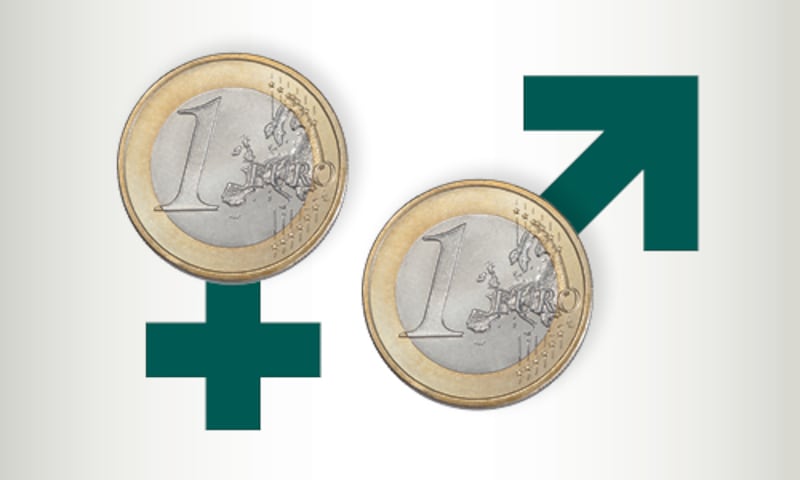Organisations with more than 250 employees have begun reporting on their gender pay gap. Under the legislation, employers had to pick a “snapshot date” in June of this year and report on the 12 months prior to that. It is important to remember that the legislation is not about equal pay, something that has been enshrined in law since the 1970s. It is about revealing the average earnings of people across the entire organisation. Significantly higher average pay for one gender may point to a bias against the other.
Gender pay gap reports must contain data on mean (average) and median (mid-point between highest and lowest) hourly wage gaps for all employees. They must also include information on bonus pay, benefits in kind, the mean and median pay gaps for part-time employees and contractors, and the proportions of males and females in the lower, lower middle, upper middle and upper quartile pay bands.
In addition, the report must contain a statement explaining why, in the employer’s opinion, a gap exists and details of how it proposes to bridge it.
Organisations with more than 150 employees will be covered by the legislation in 2024 and those with more than 50 employees will report from 2025.
READ MORE

The overall aim is to help to bring about pay transparency in organisations which in turn will play an important role in achieving gender equality in the workplace.
The bigger picture
“It’s part of a bigger picture,” says Deloitte Ireland chief human resources officer Sinead Gogan. “It’s part of a wider strategy to address female participation in the workforce. Progress on gender parity has been really slow. There is research to say it is going to take more than 130 years to close the gap at current rates of progress. Ireland has now brought in gender pay gap legislation to help to address that. The UK has had it for many years, as have many other countries. It’s a pretty blunt instrument but it is driving focus on the topic.”
Deloitte Ireland has been compiling reports on its gender pay gap for many years. “In some ways, it was less sophisticated than what we have now because we didn’t have the legislation,” Gogan says. “Last year for the first time we went ahead of the legislation and published a really comprehensive gender pay gap report. We published the report on our website in January of this year. That was a very deliberate decision taken by our leadership.”
The organisation went further than simply publishing a report, however. There was active engagement with employees to ensure that the report and its implications were fully understood. That included consultation with employee resource groups such as the Deloitte Gender Balance Network.
“Feedback from employees was really helpful and resulted in changes to some aspects of the report,” she says. “Overall, it helped generate an understanding of what the gender pay gap is and what it isn’t. People could be quite surprised when they found that pay equity was somewhat different than what they understood it to be.”
Starting point
The Deloitte report revealed an overall pay gap of 6.8 per cent, significantly below the national average which is believed to be about 14 per cent and the EU average of between 16 and 17 per cent, says Gogan.
Organisations should not look upon their gender pay gap scores as good or otherwise, she advises. “It’s not a question of whether an organisation thinks its number is good or not. The number is just the starting point, and it is more than likely that you will have to improve on it.”

Deloitte went further than the legislation required when compiling its report. “One of the things we did was to voluntarily include our partners in the report,” she explains. “As owners of the business, they are not covered by the legislation, but we decided that it wouldn’t make sense to exclude them and that the report would not be authentic without them.”
That decision highlighted an imbalance. “We need to increase female participation at partner level. We know that 90 per cent of partners within 10 years of retirement are men. We also know that the tenure of female partners is shorter. That needs to change but it’s going to take time.”
There is also an issue at director level, where 40 per cent are women. “We are pretty well balanced all the way up to senior manager level,” she says. “Female participation starts to fall off after that. And women in those higher-paid positions tend to have shorter a tenure than men.”
The organisation also took steps to ensure that there weren’t any other issues at play. “It was really helpful for us to have our global colleagues come in and do a pay equity exercise where they ran models to see if there were any pay equity issues at play. They found none. The key issue was the number of women at senior levels and their length of tenure in those roles. We will carry out that exercise every two years.”

Next steps
The question now is what Deloitte intends to do to improve its gender pay gap score. “We refreshed our gender balance strategy about 12 months before we published our first gender pay gap report. We want to ensure that we have the right numbers of women moving up through every grade.”
Gender pay gap reporting requirements came into effect in June, for companies with more than 250 employees.
A number of specific initiatives aimed at achieving that goal have been put in place. “We have a Returnship Programme to get women who are out of the workforce to come back in. We can struggle to get gender balance in experienced hires, and this will help.”
‘You need to think through the structural issues that create barriers to progress and put in place sponsorships for high-performing women’
The Deloitte Works strategy introduced in the wake of Covid is also very important. “There is no mandated number of days people need to come to the office. It’s totally based on trust. We have seen a lot of improvement in retention of women as a result. Control of their schedule is a huge issue for women in the workforce. And we know women carry most of the burden of unpaid labour in the home.”
Sponsorship is another issue. “Women tend to be overmentored and undersponsored in many workplaces,” Gogan says. “You need to think through the structural issues that create barriers to progress and put in place sponsorships for high-performing women. Research shows that this is one of the most impactful things you can do.”
Looking ahead, she believes gender pay gap reporting will shine a light on the issue of female participation but there is only so much organisations can do, it’s a societal problem as well. “The Government has a role to play in areas like childcare, which is a huge issue. School times also present a barrier to female participation. Things like new paid parental leave arrangements will help. That is progress but we have a long way to go before we get to the level of the Nordic countries. We will never have as many women as men in the workforce until you have as many men in the kitchen.”
For more information visit gov.ie/genderpaygap.















